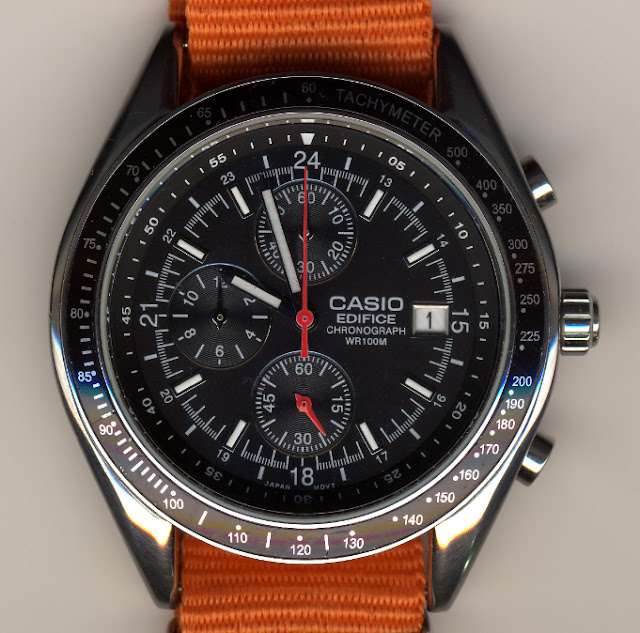Sturdy and affordable Solarforce L2 family of flashlights had a numerous worldwide following not so long ago, mainly within hunting/outdoors and flashlight enthusiast communities. L2's "tactical" appeal, moderate pricing, Lego-able design with a set of accessories, P60 drop-in compatibility and general parts interchangeability with a line of flashlights made by a major U.S. manufacturer were additional reasons for owning one. Or more than one...
Today these flashlights are still being sold online but genuine ones are getting somewhat harder to locate. Company web store has lots of L2-related items on sale with hardly any new products in sight (AFAIK last update to this series went on in 2012). It seems like this brand has seen better days so I couldn't miss the opportunity to order their L2M (Mini) flashlight host which was listed as "deal of the week" offer at the time. To complete a Lego set I also ordered one "1000 lumen" Cree XP-L 3-mode drop-in and pair of Soshine brand 18350 Li-ion batteries from AliExpress, plus one multicoat anti-reflex lens from KaiDomain.
Flashlight body arrived within 20 days from the official Solarforce web store, drop-in and AR lens travelled a bit longer while batteries took a 70-day trip around the world since Li-ions are no longer shipped onboard commercial aircraft so they obviously had to take the slow boat from China...
L2M host (i.e. body kit without drop-in) includes: L2 head with low-profile bezel ring (plain glass lens & O-rings included), M-type short body, 18650 extender tube and a forward clicky switch. As usual, my "Mini" sported some fine machining and very good HAIII anodization. Aftermarket drop-in has a nicely centered emitter and impeccable orange peel reflector. Both batteries are charging fine on my Nitecore D2 charger. All set for some Legoing!
L2M host (i.e. body kit without drop-in) includes: L2 head with low-profile bezel ring (plain glass lens & O-rings included), M-type short body, 18650 extender tube and a forward clicky switch. As usual, my "Mini" sported some fine machining and very good HAIII anodization. Aftermarket drop-in has a nicely centered emitter and impeccable orange peel reflector. Both batteries are charging fine on my Nitecore D2 charger. All set for some Legoing!
Normal procedure on all P60 flashlights is to fill the gap between drop-in and flashlight head with a suitable thermally conductive material. I used two copper foil inserts to form a tight fit here and enhance heat transfer from emitter to flashlight body. Maybe that sounds a bit overkill but my old first-generation Solarforce LC-XML single mode drop-in normally created stupenduous amounts of heat, so it got tightly wrapped with paint-stripped beverage can aluminum foil from day one. It's not copper but still does a very good job.
Driver PCB was not properly seated in the drop-in body - it needed a bit of adjustment and additional soldering. So out came my old Soviet-made 40W soldering iron. No big deal, I even rated the item 5/5 on AliExpress.
Driver PCB was not properly seated in the drop-in body - it needed a bit of adjustment and additional soldering. So out came my old Soviet-made 40W soldering iron. No big deal, I even rated the item 5/5 on AliExpress.
New lens also received a bit of extra care - I've cleaned it using pure ethanol and a paper towel. Makeshift tool (carefully fitted 3.5mm thick PVC tab) and a pair of pliers helped remove the bezel ring, which sat in its place like it was glued. Small amount of silicone grease helped O-rings and threads operate as they should. As a final touch, surfaces of reflector and lens were dusted off with few blasts of air from a balloon pump.
This is the final product. Note the blue reflection of an AR aftermarket lens:
"Mini" in its stock version is already noticeably shorter than "classic" L2 powered by 18650 battery, but you can make it even more compact if you install the L2-S7 "tactical" switch. Unfortunately this ultra-short version is rather difficult to handle due to small grip surface. Switch shown here is a stock forward clicky. Old L2 models didn't have serial numbers:
"Mini" in its stock version is already noticeably shorter than "classic" L2 powered by 18650 battery, but you can make it even more compact if you install the L2-S7 "tactical" switch. Unfortunately this ultra-short version is rather difficult to handle due to small grip surface. Switch shown here is a stock forward clicky. Old L2 models didn't have serial numbers:
"New style" switch boot with a brand name on it (AFAIK it's a 2012 revision). Old style rubber boot had smaller diameter and checkered surface, but this also differed across various L2 switch types:
Exact size reference - a bit less than 105mm (rubber boot included). As previously said, L2 Mini can get even shorter:
Solarforce L2M short version (powered by one Soshine 18350 battery) is my current EDC flashlight and real-life testing proved that it was well worth the effort...
Flashlight specs:
Brand/Model: Solarforce L2M
Description: CR123A/18650 P60 flashlight host, short body with extender tube, tailcap switch
Battery: CR123A (1 or 2); 16340/18350 (1 or 2); 18650 (1)
Body/head material: T6063-T6 aluminum alloy, black HAIII anodized
Emitter: LED, Cree XP-L Hi V3 (factory dedomed), 4300K (neutral white), approx. 700lm OTF
Driver: voltage 3.7-4.2V, 3-mode (Hi>Med>Low), last used mode memory feature, PWM regulated (sourced from AliExpress.com)
Reflector: light orange peel (LOP)
Lens: mineral glass, multicoat double anti-reflex (AR), 28x2mm (sourced from KaiDomain.com)
Switch: tailcap, forward clicky, 3 Amps max.
Waterproof: yes, IP rating n/a













